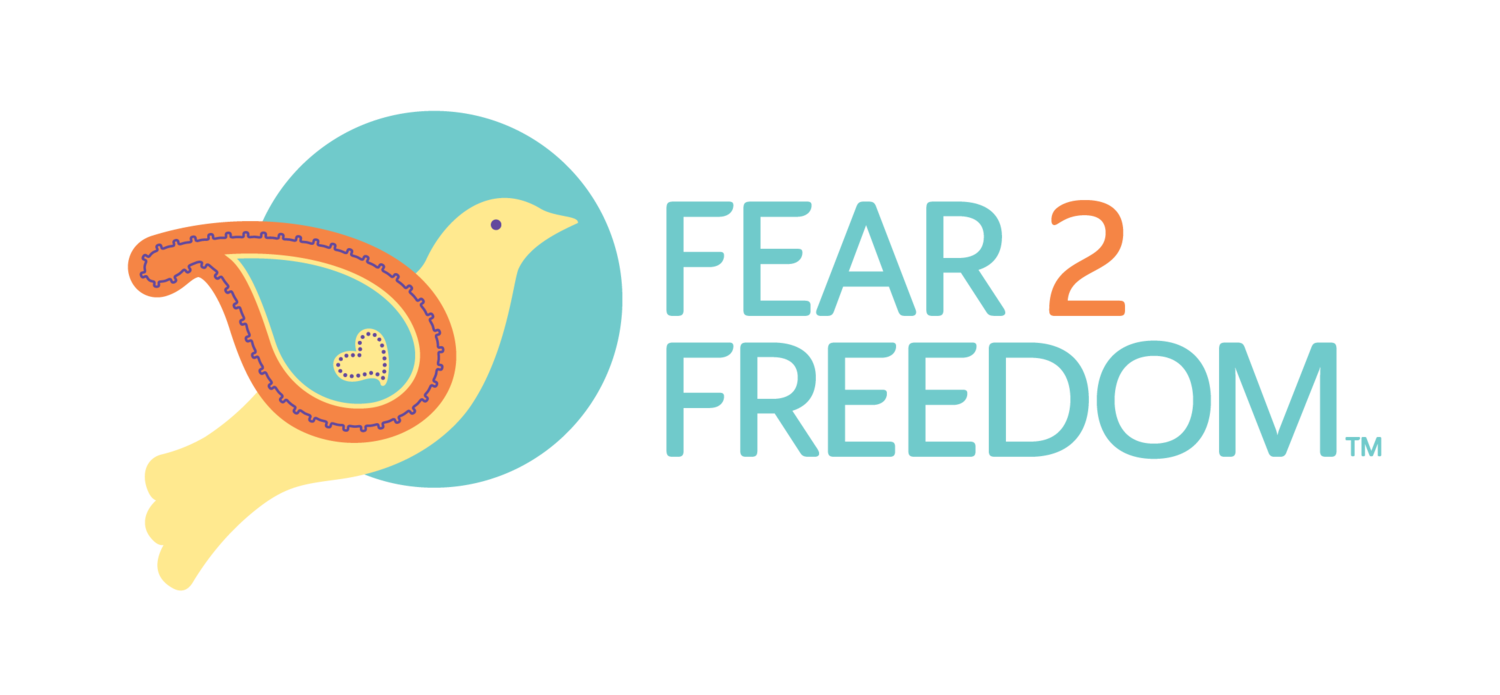content notice: sexual violence
written by: Virginia Woodward, CEO, Fear 2 Freedom
During Mental Health Awareness Month, here’s a look at how devastating sexual violence is for the wellbeing of victims & survivors. F2F CEO Virginia Woodward shares how to take mental resilience steps & practice self care when triggers cause distress…
As a university student I was violently assaulted. At the time – faced with death – surviving seemed important. But I didn’t know how hard the journey from victim to survivor would be.
In my experience, healing is a journey that takes time, courage and grace.
Surviving sexual violence creates a plethora of triggers. A smell, a sound, the weather, certain words, a song blares out…and we are transported back to a place of horror and fear. For survivors the context of assault varies from rape, abuse from intimate partners and molestation, to acts of random violence like what happened to me.
That’s why there are so many different kinds of triggers. No matter what our triggers are, it’s hard to deal with the hurt, pain and fear that can cripple our forward momentum.
On my healing journey from victim to survivor here are a few self-care coping mechanisms I learned when triggers stopped me in my tracks.
1. IT’S NOT MY FAULT Repeat this mantra: it’s not my fault! This is SO important. Many survivors – including me – play the blame game. We heap blame and shame on ourselves. We belabor “if only…”
Don’t go there. Repeat, “It’s NOT my fault” – and believe it. I am NOT to blame - the perpetrator of what happened to me is to blame.
Again, this is important: IT’S NOT MY FAULT!
2. SEEK HELP Dealing with trauma is hard on our own. We may think we are super resilient with our bravery shields set on maximum, but going at it alone most likely won’t cut it. When triggers knocked me down and my bravado started to crumble, a friend suggested I go to Student Health at our university. There I met with a counselor who helped me deal with what happened.
If you are not comfortable with counseling, there are also anonymous hotlines to call. Sharing your story can help you find your voice again.
3. REACH OUT The counselor at Student Health told me to let my friends be there for me. I had kept my assault secret, not wanting to drag my closest friends into the horror I was experiencing. Once I shared what happened they stepped up. Looking back I never would have made it through that tough time without them.
Find friends and loved ones you trust. Let them be there for you.
4. GIVE YOURSELF TIME Healing is a journey, not a checklist. It takes time, so we need to give ourselves the space, grace and time to heal. When triggers literally paralyzed me with fear, I had to let go. Breathe in, breathe out. Let it pass. For the first year there were many triggers, the second year a few less…until eventually triggers lost their power over me. (This can be a long process, not a “quick fix!”)
Be patient with yourself! Let your tears flow (they will eventually stop.)
5. SELF-CARE It’s important to take care of ourselves. In the beginning as a victim I had trouble looking in the mirror. I felt so ugly! Although with my bright red hair I cut a svelte figure, I felt lower than low, like why bother with make-up? But, as a survivor I put make-up on anyway.
Moving from victim to survivor, looking in the mirror became not such a bad thing. I finally saw that what happened to me did not make me less lovely, I could start listening to affirming voices around me saying, “You are beautiful” - even if it took awhile to believe it.
When triggers make you feel unlovely, stop and do something that makes you feel beautiful, affirmed, pampered – a bubble bath, pedicure, haircut, some kind of treat – because YOU ARE VALUABLE. Believe it. Go back and look in the mirror and don’t let what happened to you define you.
6. LET LIGHT IN Surviving sexual assault sent me into a dark place where fear crippled me inside my very core. As a student I kept up a brave front on the outside – studying for classes and being the life of the party – but inside things were dark and teary. Gradually I learned to let the light in. Here’s the thing, I had to make space for the light – the beauty of a sunset, exquisite flowers, faith, friends and family. And, laughter. I thought I would never laugh again, but guess what? Laughter was part of my healing journey.
Take violent shows off your playlist and make space for comedy, for comic books, for what makes you laugh. There is hope and healing in laughter.
7. YOU ARE NOT ALONE One reason I’m sharing this today is to let you know you are not alone. On my healing journey I encountered other survivors - like our F2F founder Rosemary Trible - who gave me hope. Hearing their stories gave me courage to keep going. When triggers decimated me, I remembered how they overcame their fears. It helped to know I wasn’t alone on my healing journey; that others had moved from victim to survivor, really and truly healed.
And so, I will attest that over time my journey took me from victim to survivor, from the crippling constraints of fear to the place of freedom – where restored joy is now a possibility each and every day.


